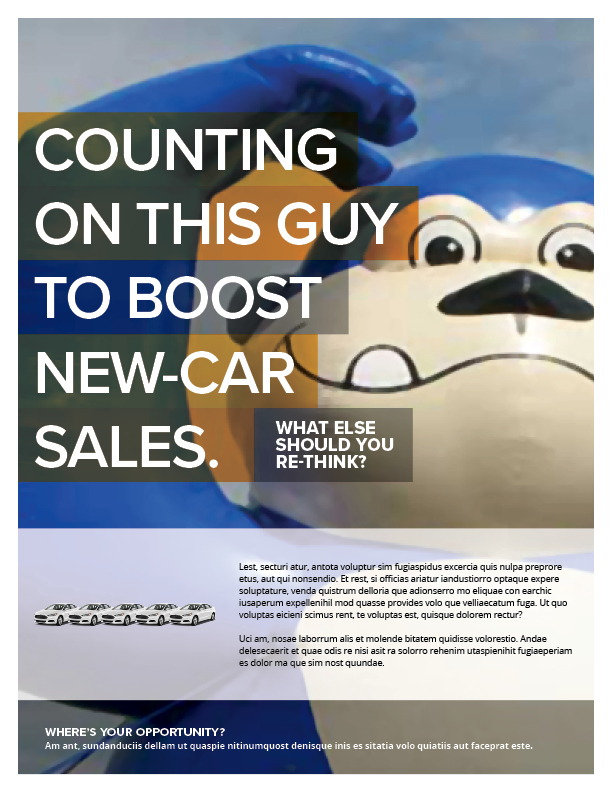Audience-tested, client-approved
There are so many case studies on great ad campaigns detailing their allure, ingenious thinking, and success. But what I find more fascinating are the stories of failure.
One of my favorite examples is when the orange juice giant, Tropicana, changed its packaging and launched a new campaign without testing. They invested $35MM in the campaign and faced an immediate rebuke from customers. The fresh-squeezed shade tossed their way on social media was swift, but the hit to their bottom line was the real punishment. Over the course of two months of shelf-time, they lost an estimated $30MM in sales because customers didn’t want to buy their product or simply couldn’t find it. (A well-written summary of this story appeared in The Branding Journal.)
The point of sharing this story is that failing in the market can be painful. And if you have any time under your belt in marketing, you’ve failed in a real-world setting too. It’s a battle scar we all carry.
Google “motivational quotes” and you’ll undoubtedly find something on page one of the search results about failure. There is a good reason for that; failure is both merciless and enlightening. But this isn’t a self-help article on failure. It’s about taking steps to prevent it.
Where to Begin with Ad Testing
Marketing is equal parts pragmatism and risk-taking. Good marketers explore, push boundaries, and welcome the challenge to shift thinking. But we don’t have to fail publicly if we get it wrong. We can and should fail in the safety of an ad test.
It’s quite simple to set up a test. The best approach is to leverage a quantitative method. Drop your marketing ideas into an online survey, send it out to your target audiences, and see what they think. More specifically, you should ask questions regarding the following attributes: overall reaction, visuals, understandability, believability, attention-generation ability, quality of information, and resonance. The result will output a ranking and detailed attribute scoring. It’s best practice to insert a few open-ended questions as well to get qualitative feedback by asking respondents to detail why they ranked and/or scored things a certain way.
Dependent upon your risk tolerance and marketing investment, we suggest a minimum of 50 completes for B-to-B testing (best is 200+) and 100 completes for B-to-C (best is 400+). If you hit these minimum completion numbers, you can have good directional confidence in the findings and the margin for statistical error is low beyond these thresholds.
The more dynamic topic to consider that will influence your “n” is how big your market is (regions, verticals, etc.), complexity of your audiences, segment sizes as well as the diversity of age, sex, religion, socioeconomic scaling, and the list goes on.
If you’re short on time, we recommend qualitative work at a minimum. You can do this officially through online focus groups or in-depth interviews. A good rule of thumb is to talk to at least eight people that fit your key demographic. Once you get to that number, you’ll start to see patterns and get a good sense of what’s hitting the mark. If you’re short on money, pick up the phone and talk to real customers or those people that fit the customer profile. It could be a friend from college, a neighbor, or a stranger at the grocery store. Don’t overcomplicate the work. Share the creative concepts, ask what they think, and listen intently.
Why You Should Leverage Ad Testing
What’s my best personal case study as to why you should leverage ad testing? I thought you’d never ask! I strive to be able to advise my clients with confidence. I work hard to know their internal point-of-view, all I can about their market, and most critically, to know their customers.
I’ve worked in the automotive marketing space for nearly 15 years, have had automotive dealers as direct clients, managed countless research studies, and observed well over 100 focus groups. A few years ago, we produced an ad campaign concept to help our client sell their SaaS-based product to automotive dealers that they use to manage their new car department. The software helps them know what cars to stock, how to price them, and how to merchandise their inventory for speed of turn and better margins. The concept we developed, pictured below, was a giant blue inflatable gorilla with copy that was meant to challenge the dealers’ methods. Not only did this ad have a striking look, but we (FARM and client) were all sure it would elicit a smile and generate immediate demand.
Well, as you’ve likely guessed, we couldn’t have been more wrong. Dealers hated it. They found it demeaning as well as off-putting because it was coming from such an esteemed brand. They also weren’t sure what we were selling. Had we gone with our (informed) gut, we would have flopped in the market.
So, the lesson we learned is that no matter the depth of experience, amount of confidence, or level of internal consensus, we can all be wrong. Testing may seem unnecessary at times, but it’s better to be safe than sorry. Testing can be confirmatory that you nailed it, or it can illuminate that one tweak that will take your work from good to great.

My final counsel? Have pride in your marketing but remember that humility beats hubris every day of the week. And true marketing humility is acknowledging that we don’t have to be the smartest people in the room, only the most curious.
If you want to talk more about ad testing, contact us today. We’d love to have a conversation.



